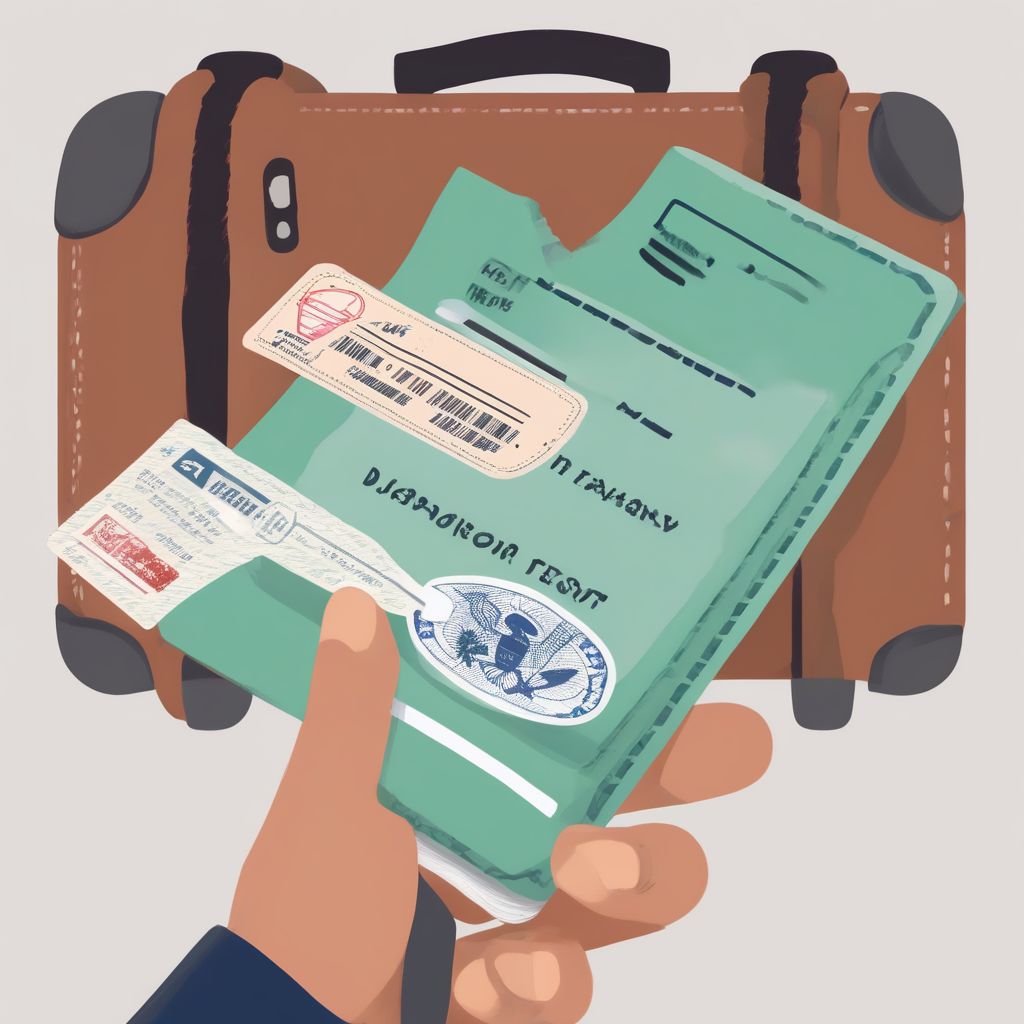Have you ever dreamt of escaping the daily grind and venturing into the untouched corners of the world? Imagine trekking through lush rainforests, summiting towering mountains, or exploring hidden villages. Traveling to remote areas offers unparalleled adventure and a chance to connect with nature on a deeper level. However, it also presents unique challenges, especially when it comes to staying healthy.
As a nutritionist and meal prepping coach, I’ve helped countless individuals achieve their health goals, even amidst demanding schedules. So, whether you’re planning a multi-day trek through the Himalayas or a secluded getaway in the Amazon, I’m here to equip you with essential tips to stay healthy on your remote adventure.
Planning Is Your Best Defense: Pre-Trip Health Essentials
Before you trade your laptop for a backpack and swap cityscapes for breathtaking vistas, prioritize these crucial pre-trip health measures:
1. Consult Your Doctor: A Must-Do Before You Say “Go”
Schedule a check-up with your doctor at least 4-6 weeks before your departure, especially if you have any pre-existing medical conditions. They can assess your overall health, update vaccinations (more on that below!), and prescribe any necessary medications to take with you.
2. Vaccinations and Medications: Your Travel Health Arsenal
Vaccinations:
- Routine Vaccines: Ensure your routine vaccines (like measles, mumps, rubella, diphtheria, tetanus, pertussis, polio) are up-to-date.
- Destination-Specific Vaccines: Consult your doctor or a travel health specialist for recommended vaccines based on your destination. Common travel vaccines include Hepatitis A, Hepatitis B, Typhoid, Yellow Fever, and Rabies.
Medications:
- Prescription Medications: Carry an ample supply of your regular prescription medications, along with a copy of your prescription and a letter from your doctor explaining your medical condition and treatment plan.
- Over-the-Counter Medications: Pack a basic medical kit containing essentials like pain relievers (ibuprofen, paracetamol), antihistamines, anti-diarrheal medication, oral rehydration salts, antiseptic wipes, antibiotic cream, bandages, and insect repellent (containing DEET).
3. Travel Insurance: Your Safety Net for Unforeseen Circumstances
Don’t underestimate the importance of travel insurance. It provides financial protection in case of medical emergencies, evacuations, lost luggage, or trip cancellations. Choose a comprehensive plan that covers medical expenses, emergency evacuation, and adventure activities you plan to participate in.
 Travel Insurance
Travel Insurance
Food and Water Safety: Navigating Culinary Adventures Safely
In remote areas, access to safe food and water can be limited. Follow these precautions to avoid unwelcome stomach bugs:
1. Water Wisdom: Staying Hydrated and Healthy
- Boil It: When in doubt, boil water for at least 1 minute to kill harmful bacteria and viruses.
- Use a Water Purifier: Invest in a portable water purifier or filter that removes bacteria, viruses, and protozoa.
- Opt for Bottled Water: Choose bottled water from reputable brands, ensuring the seal is unbroken.
2. Food Safety First: Savoring Local Delights Safely
- Cook It Thoroughly: When possible, choose cooked foods that have been heated to a high temperature.
- Peel It Yourself: Wash and peel fruits and vegetables yourself or opt for those that can be cooked.
- Avoid Uncooked Foods: Be cautious of uncooked foods, including salads, raw seafood, and unpasteurized dairy products.
[amazon bestseller=”Water Filter Bottle”]
3. Pack Smart Snacks: Your Energy Boosters On-the-Go
Carry nutrient-rich snacks to keep your energy levels up between meals, especially during long treks or excursions.
Here are some portable and healthy options:
- Trail Mix: A mix of nuts, seeds, and dried fruit provides a boost of protein, healthy fats, and carbohydrates.
- Energy Bars: Choose bars with whole grains, nuts, and seeds for sustained energy.
- Dried Fruit: Lightweight and packed with natural sugars, dried fruits like mangoes, apricots, and dates are great for a quick energy boost.
Staying Healthy On-the-Go: Tips for Maintaining Well-Being
Beyond food and water safety, prioritizing your overall well-being while traveling in remote areas is paramount.
1. Hygiene Habits for Health: Staying Clean in Challenging Conditions
- Hand Hygiene is Key: Wash your hands frequently with soap and water, especially before eating, after using the toilet, and after handling animals. Carry hand sanitizer when soap and water are scarce.
- Oral Hygiene: Pack a toothbrush, toothpaste, and dental floss to maintain good oral hygiene.
- Body Hygiene: Pack biodegradable soap and shampoo and be mindful of disposing of waste properly. Wet wipes can be helpful for freshening up when showering isn’t possible.
2. Activity and Rest: Finding the Balance
- Stay Active: Incorporate regular physical activity into your itinerary. Whether it’s hiking, trekking, or simply exploring a new city on foot, staying active keeps your body moving and boosts energy levels.
- Prioritize Rest: Don’t underestimate the importance of rest. Factor in rest days during your itinerary to allow your body to recover, especially after strenuous activities.
3. Sun and Insect Protection: Shielding Yourself from the Elements
- Sun Safety Essentials: Pack sunscreen with an SPF of 30 or higher, a wide-brimmed hat, sunglasses, and lightweight, long-sleeved clothing to protect your skin from harmful UV rays.
- Insect Repellent: Use insect repellent containing DEET to ward off mosquitoes and other biting insects that can transmit diseases.
4. Altitude Acclimatization: Adjusting to New Heights
If your adventure involves high altitudes, acclimatize gradually to prevent altitude sickness. Spend a few days at a lower altitude before ascending higher and stay hydrated.
Navigating the Unexpected: Preparing for Medical Situations
While we hope for the best, preparing for potential medical situations is crucial, especially in remote areas where access to healthcare may be limited.
1. Basic First Aid: Equip Yourself with Essential Skills
Consider taking a basic first aid course before you travel. Learn how to treat minor injuries like cuts, burns, sprains, and bites, as well as how to handle more serious situations like heat exhaustion or hypothermia.
2. Communicating with Locals: Seeking Help When Needed
Learn a few basic phrases in the local language, especially those related to asking for help or directions to a clinic or hospital. Download a translation app on your phone as well.
3. Packing a Medical Kit: Your Portable Health Companion
Pack a well-stocked medical kit with essentials like:
- Bandages, gauze, antiseptic wipes, antibiotic cream
- Pain relievers, antihistamines, anti-diarrheal medication, oral rehydration salts
- Insect repellent, sunscreen, lip balm with SPF
- Personal medications
Conclusion: Embrace the Adventure, Prioritize Your Health
Traveling to remote areas offers unparalleled experiences and a chance to connect with nature in its rawest form. By prioritizing your health and safety, you can embrace the adventure while minimizing risks. Remember to consult with your doctor, pack smart, and prioritize hygiene, rest, and sun and insect protection. By taking these precautions, you can create unforgettable memories while safeguarding your well-being. So, pack your bags, embark on your adventure, and let the transformative power of travel enrich your life!
